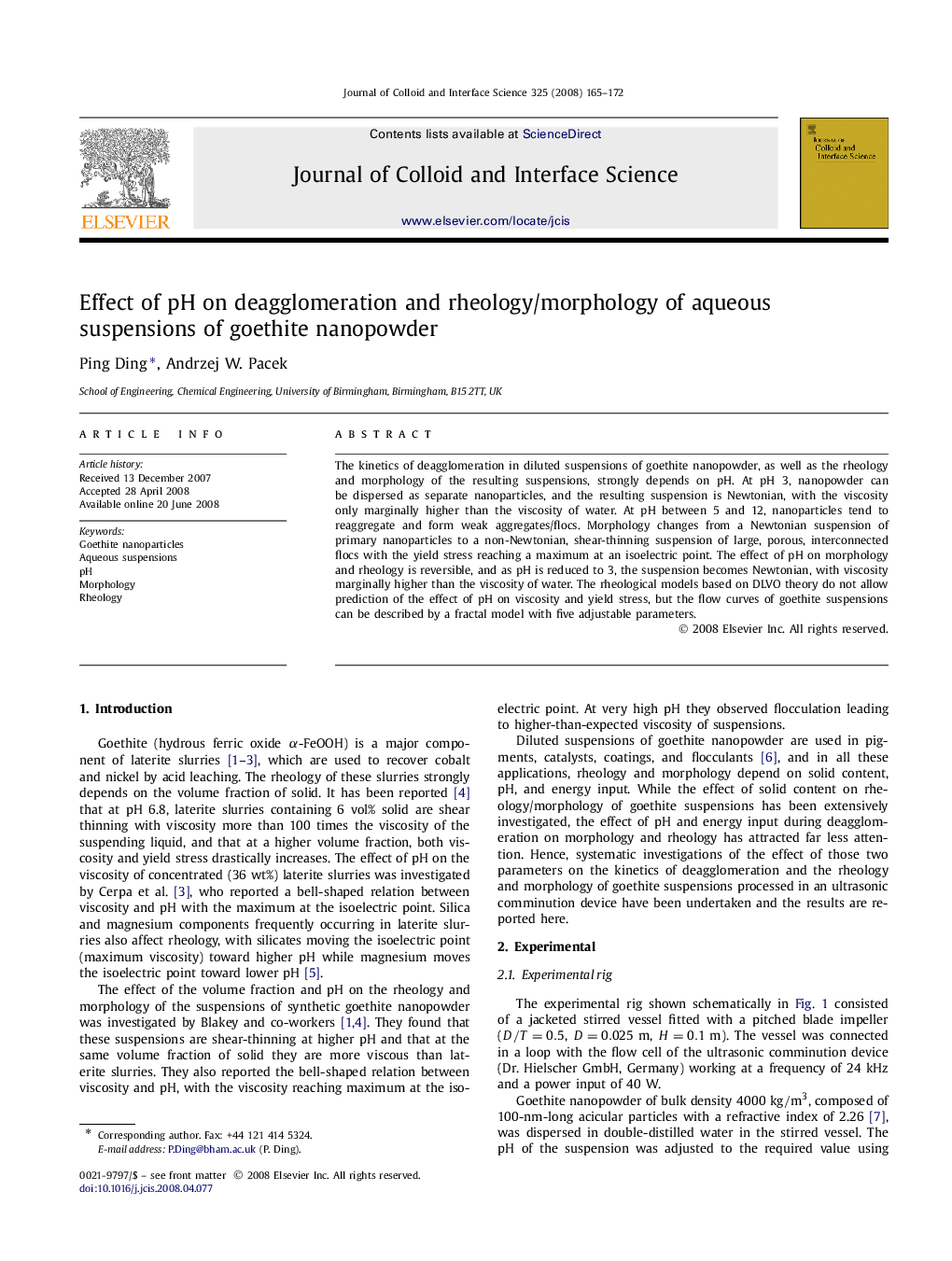| Article ID | Journal | Published Year | Pages | File Type |
|---|---|---|---|---|
| 611055 | Journal of Colloid and Interface Science | 2008 | 8 Pages |
The kinetics of deagglomeration in diluted suspensions of goethite nanopowder, as well as the rheology and morphology of the resulting suspensions, strongly depends on pH. At pH 3, nanopowder can be dispersed as separate nanoparticles, and the resulting suspension is Newtonian, with the viscosity only marginally higher than the viscosity of water. At pH between 5 and 12, nanoparticles tend to reaggregate and form weak aggregates/flocs. Morphology changes from a Newtonian suspension of primary nanoparticles to a non-Newtonian, shear-thinning suspension of large, porous, interconnected flocs with the yield stress reaching a maximum at an isoelectric point. The effect of pH on morphology and rheology is reversible, and as pH is reduced to 3, the suspension becomes Newtonian, with viscosity marginally higher than the viscosity of water. The rheological models based on DLVO theory do not allow prediction of the effect of pH on viscosity and yield stress, but the flow curves of goethite suspensions can be described by a fractal model with five adjustable parameters.
Graphical abstractAt pH 3, dispersion of nanoparticles is Newtonian with the viscosity only marginally higher than the viscosity of water. At higher pH, large, porous aggregates form and dispersion becomes non-Newtonian. The effect of pH is reversible.Figure optionsDownload full-size imageDownload as PowerPoint slide
